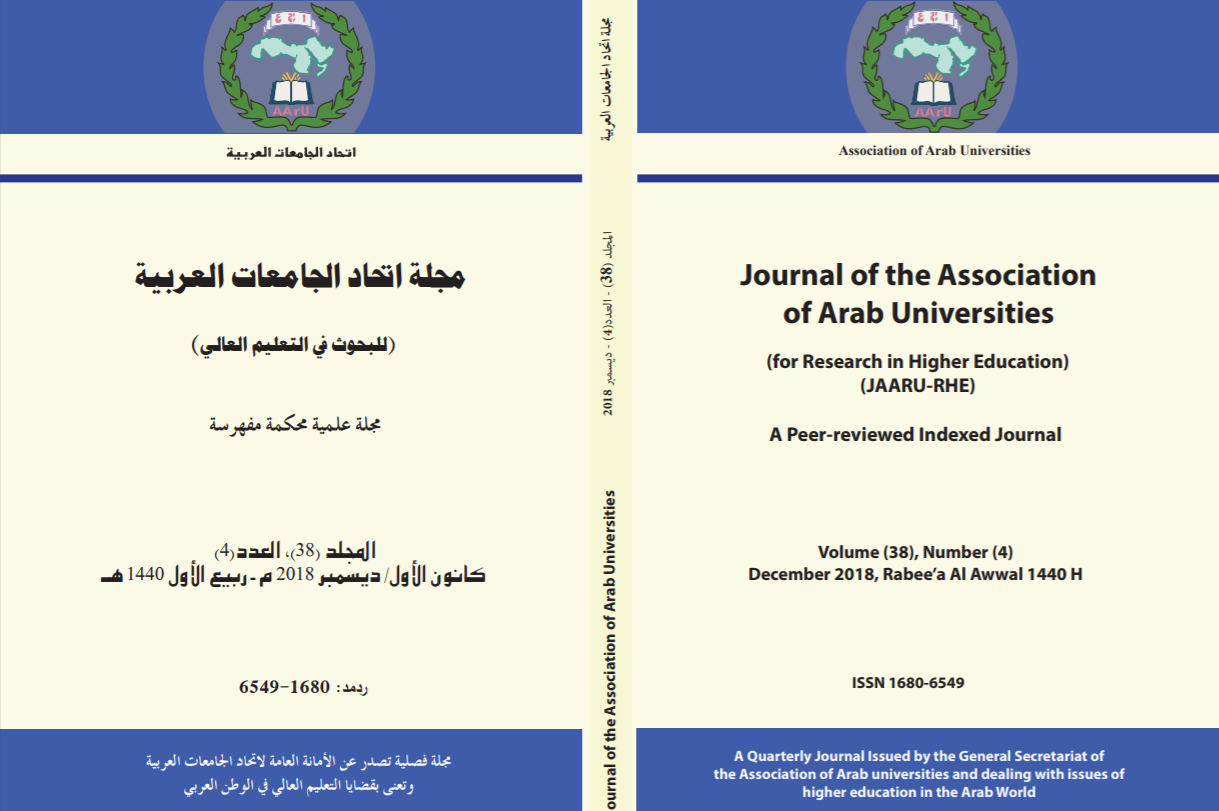Journal of the Association of Arab Universities for Research in Higher Education مجلة اتحاد الجامعات العربية للبحوث في التعليم العالي

Abstract
هدفت المقال إلى الكشف عن أثر طرق المعالجة في الحد من الاستجابات غير الجادة للاستبانات الإلكترونية، ولتحقيق أهداف الدراسة تم استخدام المنهج الوصفي، حيث تم بناء مقياس للرضا الوظيفي وجرى التحقق من صدقه وثباته، وتطبيقه على عينة مكونة من (1642) من معلمي ومعلمات وزارة التربية والتعليم الأردنية، وقسمت العينة إلى(8) مجموعات بتصميم دراسة (4×2) (مجموعات ضابطة دون وجود مراقب ومع التعليمات العادية، (7) مجموعات تجريبية توزعت كالتالي: تعليمات عادية مع وجود مراقب، وتعليمات التعهد بدون وجود مراقب، وتعليمات التعهد مع وجود مراقب، وتعليمات النفاق الاجتماعي بدون وجود مراقب، وتعليمات النفاق الاجتماعي مع وجود مراقب، وتعليمات التغذية الراجعة بدون وجود مراقب، والأخيرة وتعليمات التغذية الراجعة مع وجود مراقب)، أظهرت نتائج الدراسة أن أعلى نسبة مئوية لاستجابات أفراد عينة الدراسة غير الجديّة على الأداة كانت وفق الطريقة الأولى (تعليمات عادية دون مراقب افتراضي)، تلاها المعالجة وفق الطريقة الخامسة (النفاق الاجتماعي دون مراقب افتراضي)، في حين جاءت الطريقة السابعة (التغذية الراجعة دون مراقب افتراضي) في المرتبة الأخيرة، وبالرغم من ذلك اظهر اختبار مربع كاي عدم وجود فروق ذات دلالة بين نسب الاستجابات غير الجادة تعزى للمعالجات
The article aimed to reveal the effect of treatment methods in reducing non-serious responses to electronic questionnaires, and to achieve the objectives of the study, the descriptive approach was used, where a measure of job satisfaction was built and its validity and reliability were verified, and applied to a sample of (1642) male and female teachers of the Ministry of Education Jordanian education, and the sample was divided into (8) groups with a study design (4 × 2) (control groups without an observer and with regular instructions, (7) experimental groups distributed as follows: regular instructions with the presence of an observer, undertaking instructions without the presence of an observer, undertaking instructions with the presence of an observer, and instructions social hypocrisy without the presence of an observer, social hypocrisy instructions with the presence of an observer, feedback instructions without the presence of an observer, and the latter and feedback instructions with the presence of an observer). normal without a hypothetical observer), followed by the treatment according to the fifth method (social hypocrisy without a hypothetical observer), while the seventh method (feedback without a hypothetical observer) came in the last place, and despite this, the chi-square test showed that there were no significant differences between the rates of responses Not serious attributed to processors
Recommended Citation
Bani Esaa, Othman M. and AL Shraifin, Nermeen Nedal
(2024)
"أثر طرق المعالجة في الحد من الاستجابات غير الجادة للاستبانات الإلكترونية,"
Journal of the Association of Arab Universities for Research in Higher Education مجلة اتحاد الجامعات العربية للبحوث في التعليم العالي: Vol. 44:
Iss.
3, Article 7.
Available at:
https://digitalcommons.aaru.edu.jo/jaaru_rhe/vol44/iss3/7

